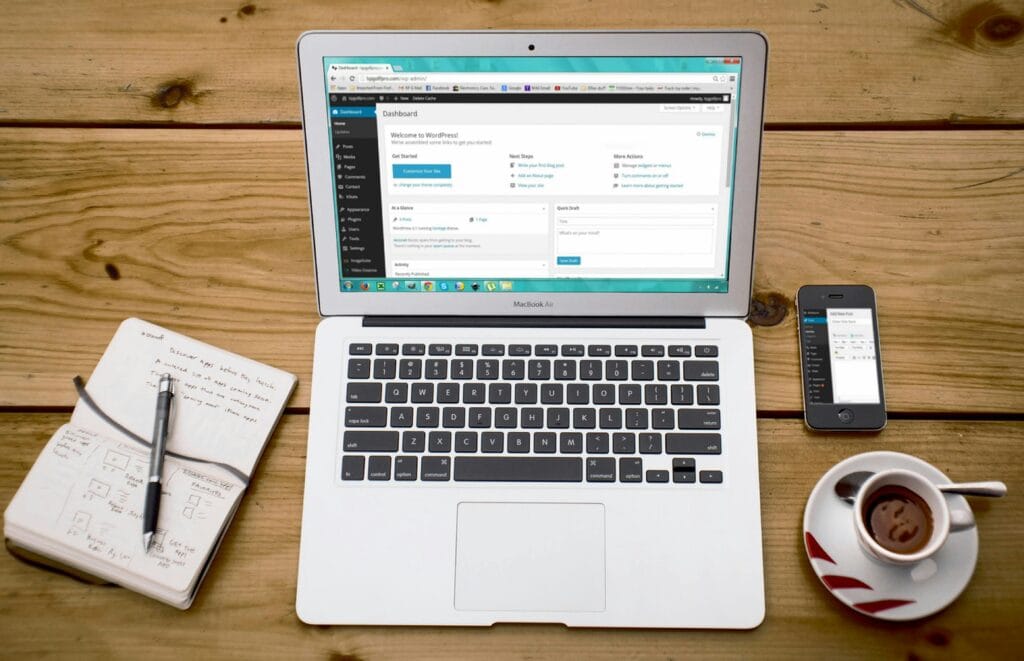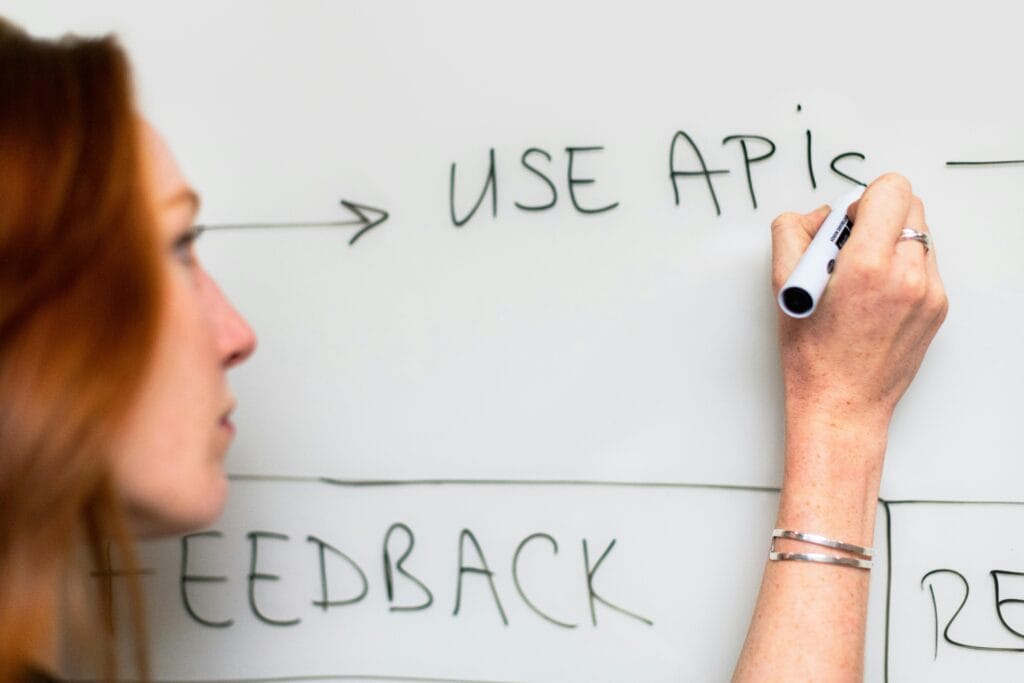The internet never stands still, and the world of websites is no exception to this. Websites are constantly evolving, and trying to keep up with new technologies is essential for remaining parallel to users’ expectations of online experiences.
At Full Stack Industries, we are experts in helping businesses keep up and get ahead in this fast-moving digital world. Today’s blog will explore how fascinating new technologies will make websites even better, more interesting, and easier to use. Let’s look at what the future might hold and explore some exciting trends just around the corner.

Websites That Feel More Real: Immersive Experiences
Since the inception of the internet, there has been a drastic shift in what people expect from websites. It’s not enough anymore to just read information or look at imagery; users want to feel like they’re experiencing something special online. This means websites must become more interactive and grab your attention like never before.
Going Beyond Aesthetics: Making Websites Interactive
When you’re online, you’re actively clicking, scrolling, and engaging. You’re not just passively absorbing information like watching TV. Instead, users should be made to feel like they are part of the experience instead of simply observing it. This is where innovation and design overlap in harmony. Finding new ways to engage users and make them feel more connected to the content is an area of design constantly being explored.
Virtual and Augmented Reality: Stepping Inside the Screen
Technologies like Virtual Reality (VR) and Augmented Reality (AR) can change how we interact with websites. For example, you could use AR on your phone to explore the interior of a new car or see precisely how a new sofa would look in your living room. While VR and AR are still developing and becoming more mainstream, they offer some fascinating possibilities for the future of online shopping, learning, and entertainment.
Tiny Details That Make a Big Difference: Micro-interactions
It’s not just the big, flashy technologies that matter. Small animations and interactive elements can make a website feel even more considered and thoughtful. This could be something as simple as a button satisfyingly changing colour when you hover your mouse over it or a progress bar showing how long a download will take.
These small touches provide feedback and make websites feel more alive. These seemingly minor details significantly improve the responsiveness, intuitiveness, and user-friendliness of websites.
Smarter Websites: The Power of AI
Artificial Intelligence (AI) is making websites much more intelligent and valuable. Instead of every visitor seeing the same thing, AI can help websites understand what you might be interested in and show you things that are more relevant to you. This technology has the potential to change how we experience the Internet.
AI can also help make tasks significantly easier and more time-efficient. Whether it’s helpful AI chatbots or coding, there is a world of possibilities out there, all benefitted and supercharged by artificial intelligence.
Websites That Learn: How Artificial Intelligence Helps
Artificial Intelligence can make websites more thoughtful and more helpful. Imagine a website that remembers what you’ve looked at before and shows you similar things you might like. AI can also help predict what you might be looking for, making it easier to find what you need. Some websites are even starting to use AI to automatically adjust how the page looks, making it easier to read and use. This means websites can become more tailored to each person’s needs and preferences.
Talking to Websites: Chatbots and Voice Assistants
You may have noticed more and more chatbots popping up on websites. AI powers these and can answer your questions quickly, provide customer support around the clock, and help you find your way around a website. Similarly, with the rise of voice assistants like Siri and Alexa, websites are also starting to incorporate voice technology.
Asking a website a question out loud instead of typing it makes the experience even faster and easier for people to get the information they need while interacting with websites naturally.
Websites That Work Perfectly for Everyone
It’s becoming even more critical that websites look good and work perfectly for everyone who visits them. Focusing on how quickly a website loads and ensuring it’s accessible to people with disabilities is an absolute must and is essential for a good online experience.
Speed Matters: Making Websites Fast
How fast a website loads is critical. If you click on a link and the page takes a long time to appear, you’re likely to get frustrated and just leave. The bounce rate goes up, and overall website performance goes down.
Website speed isn’t just about keeping visitors happy, either. Search engines like Google also pay attention to how quickly a site loads, and faster sites often rank higher in search results. Optimising websites to load quickly is crucial for a positive user experience and for getting noticed online.
Websites for All: Focusing on Accessibility
Websites should be designed with everyone in mind, including people with disabilities. Making a website accessible means ensuring that everyone can use it effectively, regardless of impairments.
This can involve ensuring all text has enough contrast to be easily readable, that websites can be navigated using just a keyboard, and that screen readers can understand the content. Creating accessible websites isn’t just the right thing to do ethically; it also means that search engines like Google can read the website more extensively and potentially rank you higher organically. Reaching a wider audience and ensuring no one is excluded from accessing your information or services is an absolute must.
Working Together Better: Design Systems and Collaboration
The way websites are built is also evolving, with a greater focus on using more intelligent systems to maintain consistency and quality. This makes the process smoother for the experts creating the websites and leads to a better experience for those using them.
Building Websites the Smart Way: Design Systems
Design systems are a set of rules for building a website. They include considerations such as colours, fonts, and button styles that will be used throughout the site. This means every page and every part of the website will have a consistent look and feel that works predictably while enforcing elements that users can interact with. Design systems make the whole website creation process much more efficient and help ensure that the final product provides a cohesive and professional brand experience–an essential element to get right both for the business and the customer.
Teamwork and Collaboration in Design
The technologies that designers and developers use to work together are also getting much better. Instead of working in separate silos, they’re now using tools that allow them to collaborate in real-time, share ideas easily, and get feedback quickly. This improved teamwork leads to more innovative designs and websites built more effectively, resulting in a better outcome for everyone involved.
Thinking About the Planet: Sustainable Design
Awareness is growing about the environmental impact of all online activity, including website design. More and more people are exploring ways of making websites more sustainable and reducing their carbon footprint.
Designing for a Greener Web
There’s a growing focus on making websites more environmentally friendly. According to the BBC, the carbon footprint of our gadgets, the internet, and the systems supporting them accounts for about 3.7% of global greenhouse emissions, making awareness and consideration of environmentally friendly practices increasingly important.
The solution can involve various strategies, such as making the website code more efficient, using less data, or choosing web hosting companies that use renewable energy. Sustainable design is becoming increasingly crucial for the future of the internet and for protecting the planet.

Making Website Building Easier: No-Code and Low-Code
The way websites are created is also changing, with new tools emerging that allow people to build websites without needing to have extensive knowledge in coding. This opens up website creation to a broader range of individuals and businesses to install simple coding solutions that further benefit websites.
Building Websites Without Coding: New Tools Emerge
No-code and low-code platforms are making it easier for people to build websites without knowing how to write complex code. These tools often provide a visual way to design and develop websites using drag-and-drop interfaces and pre-built components.
While these platforms can be beneficial for creating more straightforward websites or quickly establishing an essential online presence, more complex projects with specific needs often still require the expertise of professional web designers.
The Future is Now: Staying Ahead of the Curve
Website design is constantly evolving, and the exciting new technologies we’ve discussed are already present or near on the horizon. To stay relevant and compelling online, it’s crucial to be adaptable and always learn about what’s new and coming next.
At Full Stack Industries, we’re committed to staying at the forefront of these changes, and we are ready to help businesses leverage these advancements to create powerful and engaging online experiences. The future of website design is full of potential, and we can’t wait to see what innovations the coming years will bring.






